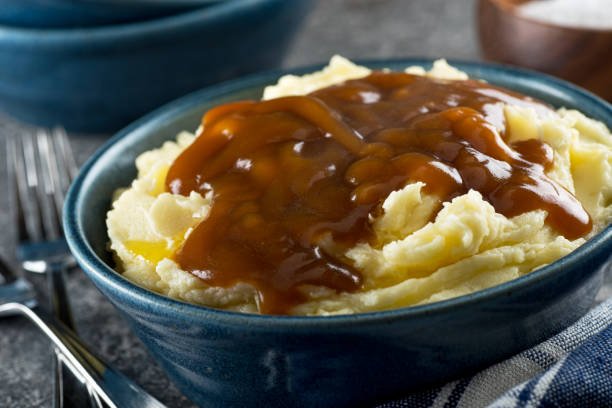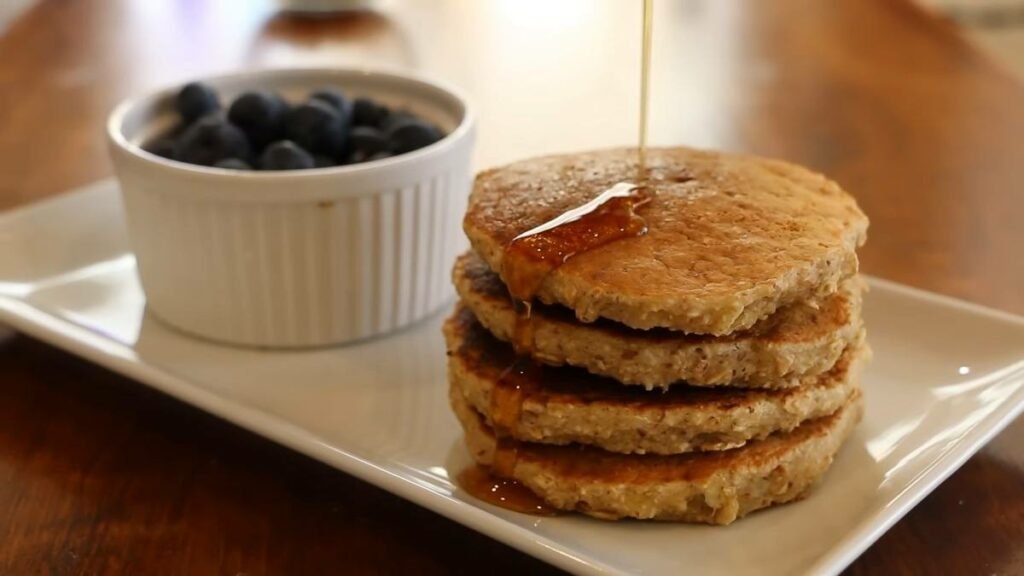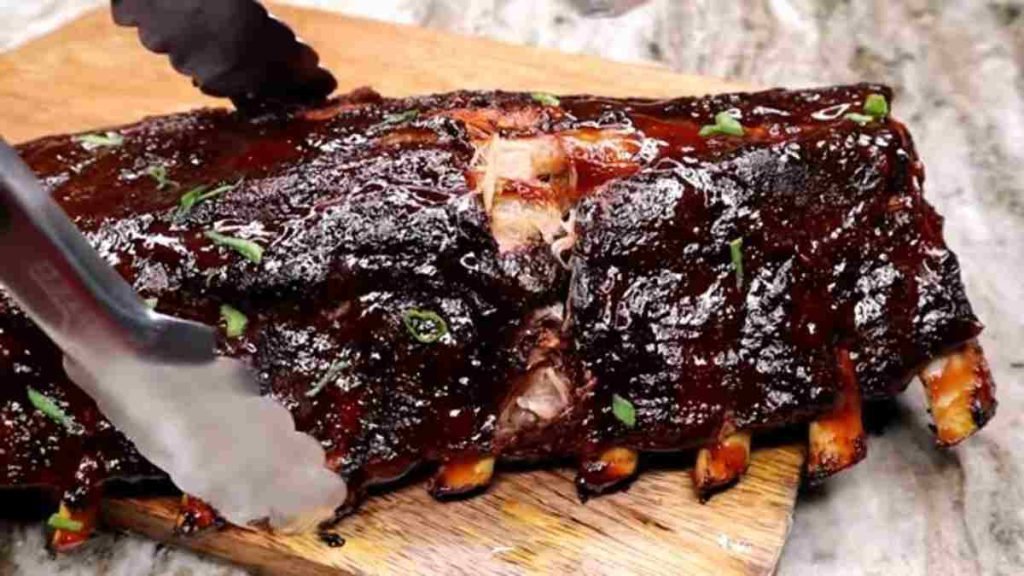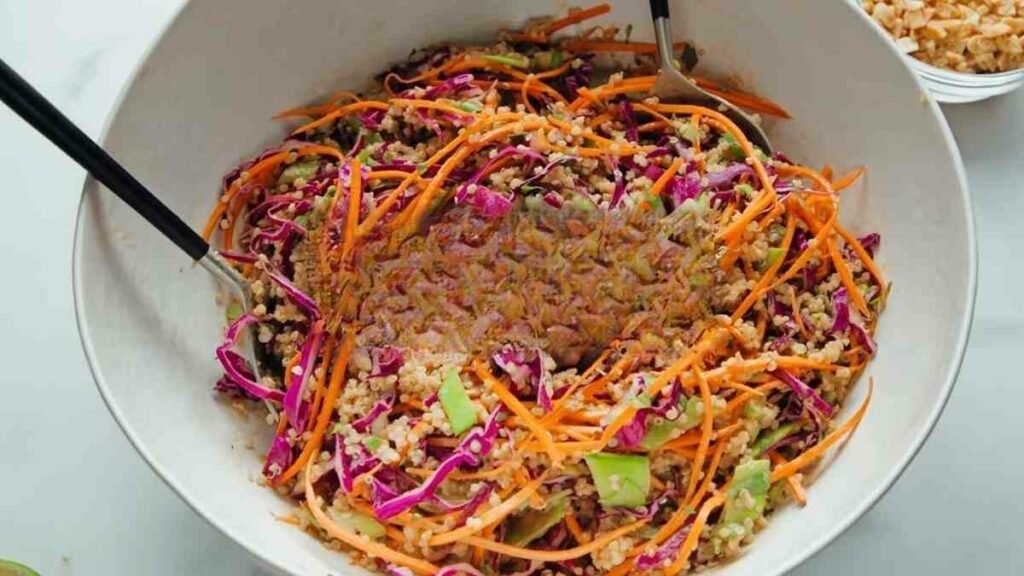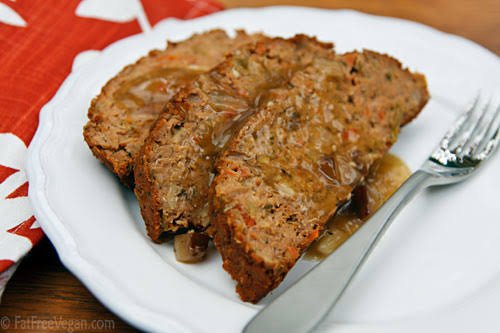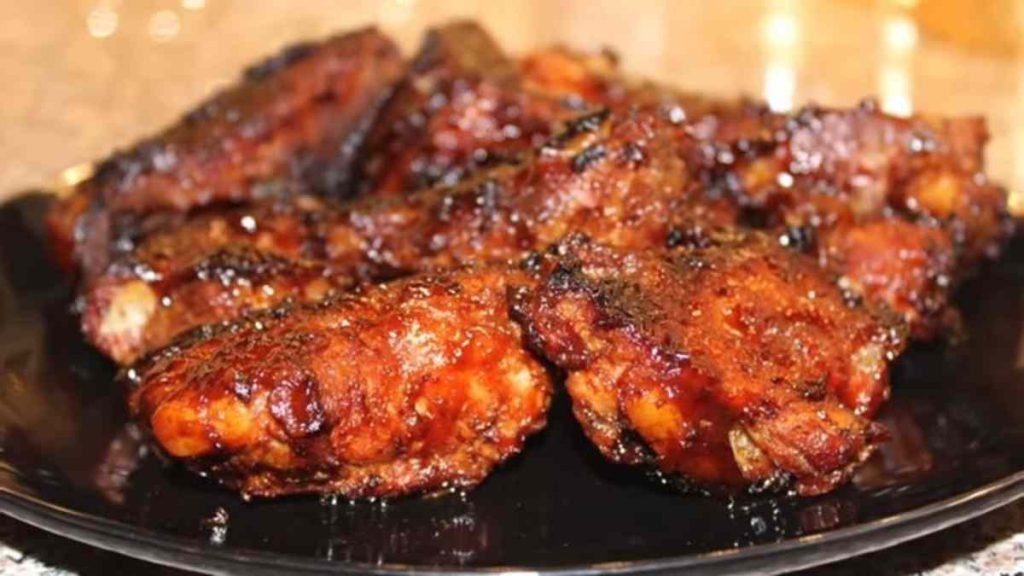Dairy-free puddings are a delicious and healthy alternative to traditional dairy-based puddings. While this incredibly tasty dish dates back centuries, dairy-free variations have become increasingly popular in recent years. This is mostly due to dietary restrictions and a desire for healthier options.
These creamy desserts are made with plant-based milk, such as almond or coconut milk, and are often flavored with natural sweeteners like maple syrup or agave. If you want to know more about cooking this pudding, you have read the right blog post.
Ingredients and equipment Needed:
There are several ingredients you need to prepare a dairy-free pudding. Here are some of the ingredients below.
- 2 cups of plant-based milk ( almond, soy, or coconut milk): This is the natural replacement for dairy milk used in the traditional recipe.
- ¼ cup of cornstarch or arrowroot powder: This helps give your pudding a creamy smooth texture.
- ¼ cup of natural sweetener (eg maple syrup, agave, or coconut sugar): You need this to add sweetness to your pudding.
- 1 teaspoon of vanilla extract: This enhances the pudding’s flavor.
- A pinch of salt: This adds sweetness and enhances the overall flavor.
Since you do not need many ingredients to prepare this recipe, it shouldn’t take more than 10 minutes to prepare them.
In addition to the ingredients, you also need certain tools or kitchen equipment to prepare this recipe. Here is the equipment below.
- Medium-sized saucepan.
- Whisk or a spatula.
- Measuring cups and spoons
- Blender or food processor (optional).
- Pudding cups or ramekins.
A Step-by-step Guide to Cooking Dairy-free Puddings
Cooking dairy-free puddings is relatively easy. Here is a guide on how to cook it below.
1. Whisk the dry ingredients together
This is the first thing you must do to prepare this recipe. In a medium-sized saucepan, you must whisk the dry ingredients together. You must mix cornstarch, sugar, salt, and any other dry ingredients you want to add to this recipe.
Doing this ensures that the dry ingredients are evenly distributed and prevents clumps from forming later.
2. Pour and whisk in the non-dairy milk
Gradually pour in the non-dairy milk, whisking constantly as you do so. This helps to incorporate the liquid into the dry ingredients and prevents lumps.
3. Cook the mixture over medium heat
Once you have poured the non-dairy milk, place the saucepan on the stove over medium heat and whisk it constantly as it cooks. The mixture should thicken as it heats up. This is why it is imperative to keep mixing to prevent lumps.
4. Allow the mixture to cool down while whisking
Once the mixture boils, reduce the heat and let it cool down for 2-3 minutes. You must continue to whisk the mixture during this time to ensure it thickens evenly and doesn’t burn on the bottom of the pan.
5. Add the necessary flavorings
Once it cools down, remove the saucepan from the heat and add any additional flavorings to the recipe. This could include vanilla extract or melted chocolate
6. Pour the Pudding into Cups and Refrigerate
This is the last step in preparing the recipe. Pour the pudding mixture into individual cups and place them in the refrigerator for at least 2-3 hours. This allows the pudding to set and thicken up fully.
While preparing the pudding can take around 10 to 15 minutes, it will typically require at least 2 hours to solidify in the refrigerator. It will take 2 ½ hours for your pudding to be ready.
Once ready, you can serve the dairy-free pudding with other dishes, including ice cream, pies, cakes, and more.
Tips and Tricks for Cooking a Perfect Dairy-free Pudding?
There are basic tips and tricks you can adopt to improve the quality of your pudding. Here are some tips below.
- Use high-quality ingredients: this is the key to perfect taste. You must use superior quality ingredients, as it will enhance your pudding’s taste and give it a richer flavor.
- Follow the recipe closely: carefully follow the instructions or steps in the article. This will increase the chances of your pudding tasting delicious.
- Use a whisk or electric mixer: Whisking the pudding mixture or using an electric mixer will help create a smooth texture for your pudding. It also ensures that all ingredients are combined.
- Taste as you cook: This is also very vital. Taste the pudding mixture as you cook it to ensure it has the right sweetness and consistency.
- Refrigerate the pudding before serving: you must refrigerate the pudding for at least 2-3 hours in the refrigerator. As a result, it will set better, and the taste and texture will improve.
- Add toppings: Add necessary toppings like fresh fruits, nuts, or chocolate chips to add flavor and texture to your dairy-free pudding.
Nutritional Benefits of Dairy-Free Puddings
Gone are the days when dietary restrictions limited our dessert options. With the rise of dairy-free alternatives, we can now enjoy the velvety goodness of puddings without compromising our health or lifestyle choices.
1. Lactose-Free and Allergy-Friendly
One of the primary benefits of dairy-free puddings is that they are lactose-free. This means they can be enjoyed by individuals with lactose intolerance, a condition where the body lacks the enzyme necessary to digest lactose, the sugar found in milk.
Furthermore, dairy-free puddings are also free from common allergens such as cow’s milk protein, making them a safe option for those with dairy allergies or sensitivities.
2. Plant-Based Protein
Dairy-free puddings often contain plant-based proteins, such as soy or almond protein. These proteins offer a healthier alternative to traditional dairy-based proteins. For individuals following a vegan or vegetarian lifestyle, dairy-free puddings can be an excellent way to incorporate essential amino acids into their diet.
3. Healthy Fats
Many dairy-free puddings, such as coconut milk or avocado, are made with plant-based fats. These fats provide a good source of healthy monounsaturated and polyunsaturated fats, which can help promote heart health and reduce the risk of cardiovascular diseases.
These fats also aid in absorbing fat-soluble vitamins, such as A, D, E, and K.
4. Nutrient-Dense Ingredients
Dairy-free puddings are often made with nutrient-dense ingredients, such as fruits, nuts, seeds, and superfoods like chia or flaxseeds. These ingredients offer a range of vitamins, minerals, antioxidants, and dietary fiber, contributing to a well-rounded and wholesome dessert option.
For example, chia seeds are rich in omega-3 fatty acids and fiber, while fruits provide essential vitamins and antioxidants.
5. Reduced Cholesterol and Saturated Fat
Dairy-free puddings inherently decrease cholesterol and saturated fat by eliminating dairy products. Excessive cholesterol and saturated fat intake have been linked to an increased risk of heart disease and other health issues.
Opting for dairy-free alternatives can help individuals maintain a heart-healthy diet and reduce their overall intake of unhealthy fats.
6. Digestive Health
Some dairy-free puddings, especially those containing probiotics, can promote digestive health. Probiotics are beneficial bacteria that support a healthy gut microbiome. Probiotic-rich dairy-free puddings can improve digestion, enhance nutrient absorption, and boost the immune system.
Dairy-Free Puddings Serving Suggestions

- Fresh Fruit Medley: Pairing dairy-free pudding with a colorful assortment of fresh fruits is a classic and healthy choice. Choose fruits that complement the flavor of your pudding. For example, serve a chocolate dairy-free pudding with sliced strawberries and raspberries for a delightful combination of flavors. Alternatively, try tropical fruits like mangoes, pineapples, and kiwis with a coconut-based pudding for a refreshing and exotic twist.
- Nutty Delights: Incorporating various nuts into your dairy-free pudding serving can add crunch, texture, and a nutty flavor profile. Consider topping your pudding with toasted almonds, chopped pecans, or walnuts. You can even mix crushed peanuts or pistachios into the pudding for an interesting twist. Combining smooth, creamy pudding and nutty crunch creates a satisfying dessert experience.
- Decadent Sauces: Drizzling a delectable sauce over your dairy-free pudding takes it to another level of indulgence. For a classic touch, go for a rich, dairy-free chocolate sauce or caramel sauce. Try a homemade berry compote or citrus-based sauce if you prefer fruity flavors. These sauces add a burst of flavor and enhance the overall dessert experience.
- Cookie Crumble: Adding a layer of crushed cookies on top of your dairy-free pudding provides a delightful textural contrast. Consider using dairy-free cookies such as Oreos or graham crackers for a familiar taste. You can opt for almond flour or oat-based cookies for a gluten-free option. Creamy pudding and crumbly cookies create a playful and satisfying dessert.
- Spiced Infusions: Infusing your dairy-free pudding with aromatic spices can elevate the flavor profile and add a touch of warmth. Popular spices to consider include cinnamon, nutmeg, cardamom, and ginger. Sprinkle your desired spice on the pudding or infuse it directly during cooking. These spices provide a cozy and comforting twist to your dairy-free dessert.
- Gourmet Garnishes: To give your dairy-free pudding a touch of sophistication, experiment with gourmet garnishes. Consider topping your pudding with edible flowers, shaved dark chocolate, or a dusting of cocoa powder. Add a dollop of dairy-free whipped cream or a sprinkle of edible gold flakes for an extra-special presentation. These garnishes enhance the visual appeal and add complexity to the flavor profile.
Storage Tips for Dairy-Free Puddings
Like their dairy-based counterparts, dairy-free puddings require proper storage to maintain their taste and texture over time.
- Freeze for longer storage: If you don’t plan on consuming your dairy-free pudding within a few days, freezing is an excellent option to maintain its freshness. Transfer the pudding into freezer-safe containers, leaving some headspace for expansion. Seal the containers tightly to prevent freezer burn and store them in the freezer. Frozen dairy-free puddings can last for up to three months.
- Thaw and serve with care: When ready to enjoy your frozen dairy-free pudding, thaw it in the refrigerator overnight. Slow thawing helps retain the pudding’s creamy texture and prevents it from becoming grainy. Avoid microwaving or using high heat, as it may compromise the taste and consistency. Once thawed, gently stir the pudding before serving to combine it well.
- Avoid excessive temperature fluctuations: To preserve the quality and taste of your dairy-free pudding, avoid subjecting it to frequent temperature changes. Frequent exposure to warm room temperatures or fluctuating between the refrigerator and countertop can lead to spoilage or texture alteration. Always store the pudding in the refrigerator; once removed, try to consume it within a reasonable time frame.
How do I thicken dairy-free Pudding Without Using dairy-based Ingredients?
There are several ways to thicken dairy-free pudding without relying on dairy-based ingredients. One common thickening agent is cornstarch, which can be mixed with a small amount of cold water and added to the pudding mixture. Another alternative is arrowroot powder, which can be used similarly.
Additionally, some recipes use chia seeds or agar-agar to achieve a thicker consistency. Follow the specific instructions in your chosen recipe for the best results.
Can I Substitute eggs in Dairy-free pudding Recipes?
Yes, eggs can be substituted in dairy-free pudding recipes. You can replace eggs with mashed bananas, unsweetened applesauce, silken tofu, or a flaxseed meal mixed with water. These alternatives can provide a similar binding effect as eggs and contribute to the texture of the pudding. The specific substitution ratio may vary depending on the recipe, so follow the instructions closely.
Can I make dairy-free Puddings Without refined Sugar?
Yes, you can make dairy-free puddings without using refined sugar. Natural sweeteners such as maple syrup, agave nectar, coconut sugar, and dates can be substitutes. These alternatives can add sweetness to your pudding while offering additional flavors and nutritional benefits.
Adjust the amount of sweetener to your taste preferences, and remember to check the specific recipe for guidance on substitution ratios.

Dairy Free Puddings Recipe
Equipment
- Medium-sized saucepan
- Whisk or a spatula
- Measuring cups and spoons
- Blender or food processor (optional)
- Pudding cups or ramekins
Ingredients
- 2 cups of plant-based milk
- ¼ cup of cornstarch or arrowroot powder
- ¼ cup of natural sweetener
- 1 teaspoon of vanilla extract
- A pinch of salt
Instructions
- In a medium-sized saucepan, you must whisk the dry ingredients together. You must mix cornstarch, sugar, salt, and any other dry ingredients you want to add to this recipe.
- Gradually pour in the non-dairy milk, whisking constantly as you do so. This helps to incorporate the liquid into the dry ingredients and prevents lumps.
- Once you have poured the non-dairy milk, place the saucepan on the stove over medium heat and whisk it constantly as it cooks. The mixture should thicken as it heats up. This is why it is imperative to keep mixing to prevent lumps.
- Once the mixture boils, reduce the heat and let it cool down for 2-3 minutes. You must continue to whisk the mixture during this time to ensure it thickens evenly and doesn’t burn on the bottom of the pan.
- Once it cools down, remove the saucepan from the heat and add any additional flavorings to the recipe. This could include vanilla extract or melted chocolate
- Pour the pudding mixture into individual cups and place them in the refrigerator for at least 2-3 hours. This allows the pudding to set and thicken up fully.While preparing the pudding can take around 10 to 15 minutes, it will typically require at least 2 hours to solidify in the refrigerator. It will take 2 ½ hours for your pudding to be ready.Once ready, you can serve the dairy-free pudding with other dishes, including ice cream, pies, cakes, and more.
Video
Conclusion
We have explored the world of dairy-free puddings and discovered the incredible array of flavors and textures that can be achieved without using traditional dairy products. Whether you follow a vegan lifestyle, have lactose intolerance, or enjoy exploring new culinary possibilities, dairy-free puddings offer a delightful and healthier alternative to their dairy-based counterparts.
We have learned that dairy-free puddings can be customized to suit individual preferences and dietary needs with the variety of non-dairy milk options available, such as almond, soy, coconut, and oat milk. These plant-based milk bring their unique set of nutrients, whether it’s the vitamin E and calcium found in almond milk, the high-quality protein in soy milk, or the medium-chain triglycerides in coconut milk.





